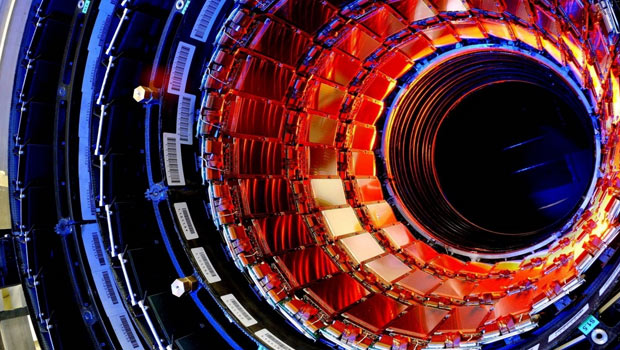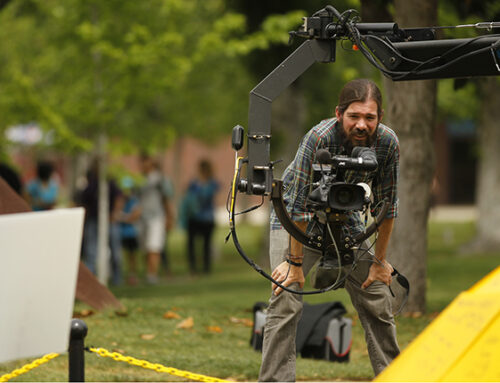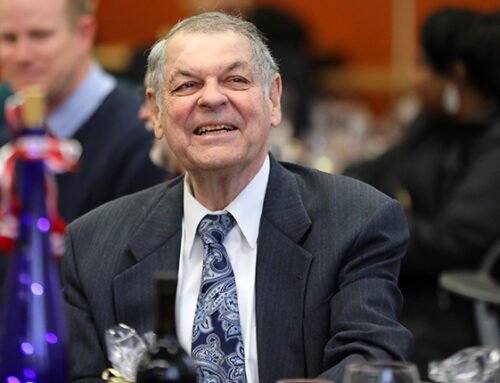The world’s most powerful particle accelerator began its second act earlier this month, and Fresno State students and faculty remain engaged in research on the origins of the universe. After two years of upgrades and repairs, proton beams are once again circulating around the Large Hadron Collider, located at the CERN (an acronym for the European Organization for Nuclear Research) laboratory near Geneva, Switzerland.
With the collider back in action, more than 1,700 U.S. scientists are prepared to join thousands of their international colleagues to study the highest-energy particle collisions ever achieved in the laboratory. These collisions — hundreds of millions every second — will lead scientists to new and unexplored realms of physics, and could yield insight into the nature of the physical universe.
Five Fresno State students — Jeffrey Rowland, Jimmy Gonzalez, Jon Van Noort, Marijus Brazickas and Victor Ruelas — will spend the summer at the CERN laboratory participating in research as part of the ATLAS (A Toroidal LHC ApparatuS) experiment. In addition to their research, students will also attend the CERN Summer Lecture Series, which features top physicists from around the world.
“We are very excited about the restart of the Large Hadron Collider after the long shutdown,” said Dr. Yongsheng Gao, professor of physics at Fresno State. “This summer our students will be running simulations, developing new tools for ATLAS physics and searching for new physics from ATLAS data.”
Gao and Fresno State students have been involved in the project for eight years, seeking to understand the structure of matter.
Fresno State has been a leader in developing the California State University Nuclear and Particle Physics Consortium, which now consists of 17 of the 23 CSU campuses. Fresno State’s participation in ATLAS research has been funded by National Science Foundation grants of over $2 million, and most recently by an International Research Experience for Students grant, which is being recommended for funding. Each of the 15 students will receive a $5,000 stipend in addition to travel, lodging, and food expenses for the 10-week visit to CERN.
A highlight of the collider’s first run, which began in 2009, was the discovery of the Higgs boson, the last in the suite of elementary particles that make up scientists’ best picture of the universe and how it works. The discovery of the Higgs boson was announced in July 2012.
“The Higgs discovery was one of the most important scientific achievements of our time,” said James Siegrist, the U.S. Department of Energy’s associate director of science for high energy physics. “With the Large Hadron Collider operational again, at even higher energies, the possibilities for new discoveries are endless, and the United States will be at the forefront of those discoveries.”
During the collider’s second run, particles will collide at 13 teraelectronvolts (TeV), which is 60 percent higher than any accelerator has ever achieved.
At 17 miles around, the Large Hadron Collider is one of the largest machines ever built.
“We are on the threshold of an exciting time in particle physics: the Large Hadron Collider will turn on with the highest energy beam ever achieved,” said Fleming Crim, National Science Foundation assistant director for mathematical and physical sciences. “This energy regime will open the door to new discoveries about our universe that were impossible as recently as two years ago.”
The second run of the collider is scheduled to continue through the middle of 2018.
For more information about Fresno State’s involvement in the research, contact Dr. Yongsheng Gao at 559.278.4554 or yogao@csufresno.edu. For more information about the collider, contact Sarah Charley, U.S. Large Hadron Collider communications coordinator, at scharley@fnal.gov or 630.338.3034
Related links:



